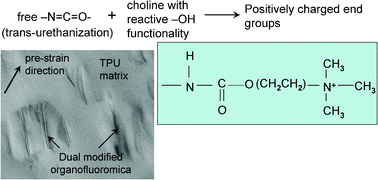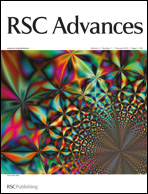Engineered nanofillers: impact on the morphology and properties of biomedical thermoplastic polyurethane nanocomposites
Abstract
The viability of siloxane-based thermoplastic polyurethane (TPU) nanocomposites as a new insulation material for implantable and electrically active medical devices is investigated. We show that manipulating and controlling the specific interactions between the TPU segments and the engineered nanofiller greatly varies the TPU properties. The incorporation of dual modified organofluoromica as the nanofiller successfully enhanced the tensile strength, toughness and tear strength of the TPU. This is due to the presence of dual surfactants, which form regions of higher and lower surface energy on the layered silicate surface, thus enabling molecular interactions between the organofluoromica and both the hard and the soft TPU segment populations. We show that the addition of a second choline-based modifier with reactive –OH functionality may lead to the formation of positively charged TPU chain end groups as a result of trans-urethanization reactions during high temperature compounding, thus introducing labile “grip-slip-grip-slip” interactions between the TPU and the nanofiller. These molecular interactions assist in achieving a reduced level of stiffening, while at the same time enhance the toughening mechanism. The increase in the creep resistance and retardation in the stress relaxation of the TPU provides evidence that the dual modified organofluoromica also serves to enhance the dimensional stability of the TPU.


 Please wait while we load your content...
Please wait while we load your content...